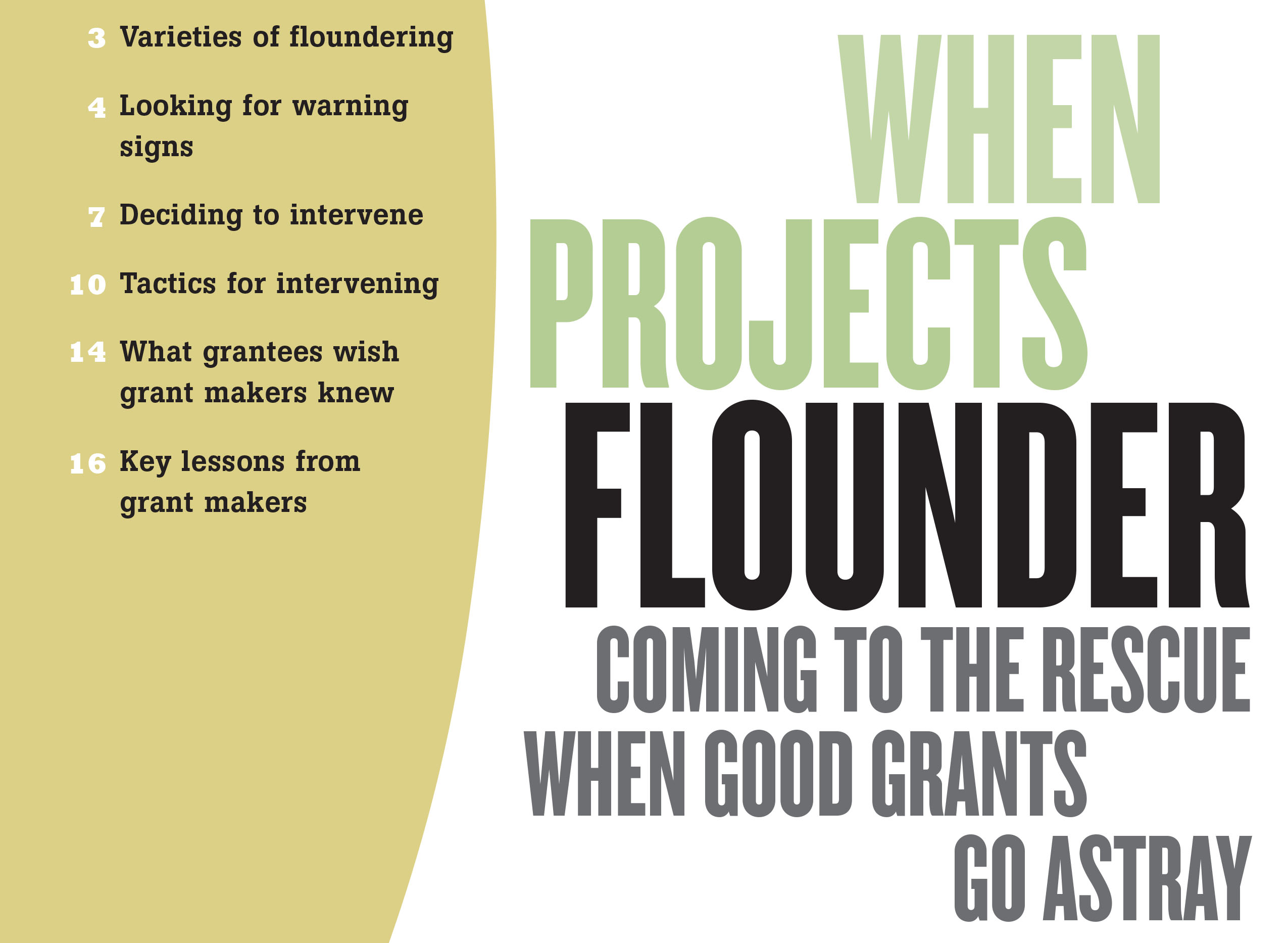A Floundering Organization (with a Positive Outcome!) How one large foundation intervened to help a grantee
GRANTMAKER: A large foundation that believed promoting collaboration among environmental organizations was critical to its long-term strategy.
GRANTEE: A national umbrella organization of two dozen local environmental advocacy groups that had been founded several years earlier with the foundation’s support.
THE SITUATION: Complex, time-consuming, sometimes delicate intervention by the grantmaker in the grantee’s financial problems, which were partly related to its lack of strategy.
Q. How did you know this organization was in trouble — and not just another cash-strapped nonprofit going through some hard times?
A. The issue was cash flow. We tried to help them through that, but we were very uncomfortable because we were really patching things together to overcome what was really bad practice. Essentially, they had used $60,000 of project money for core support.
Q. You wanted to save this organization, but you didn’t want to enable bad management. How did you signal that you were there to help, but that things had to change?
A. We knew that they were many thousands of dollars in the hole. So we met with the executive director and the board. We told them they needed to get their financial house in order, and that there would be no grant for deficit reduction. After considering their options, they came back with a wish list — a huge number of projects with an endowment goal on top of it all. But there was something missing. They had vision, but no steps to get there. They really needed help growing and building capacity for new revenue streams. They didn’t have sound ideas on this. We agreed that they would need some consultants to help them figure it out.
Q. This is a delicate moment to introduce new players. Was the grantee receptive to the consultants that you recommended?
A. At first they were resistant to the consultants’ financial and management approach, which they found off-putting. About then, we also reached unanimous understanding that they had been taking on lots of projects without thinking strategically about what they should focus on. They were really stretched thin and were not saying “No” often enough. So we told them we needed benchmarks, which they could set, to focus their efforts — with the consultants’ help — on reducing the deficit within a certain period, and on attracting new members. It was rough going for a while.
Q. It’s been more than two years since you intervened. Are things better?
A. They’re pulling out. There’s no deficit any more. They’ve come an incredible distance. Once they figured out what they needed to do, they went to work. For an organization where discussion of money could be seen as poisonous — as a sign that you’ve lost your mission — they really shifted. They’re seeing that conferences, for example, could actually provide income. They also clarified that there was some service work that would never make money but was important. That led them to the development of new plans, where they began exploring how they could generate revenue from some of their work, and how they would fund the work that doesn’t generate fees.

